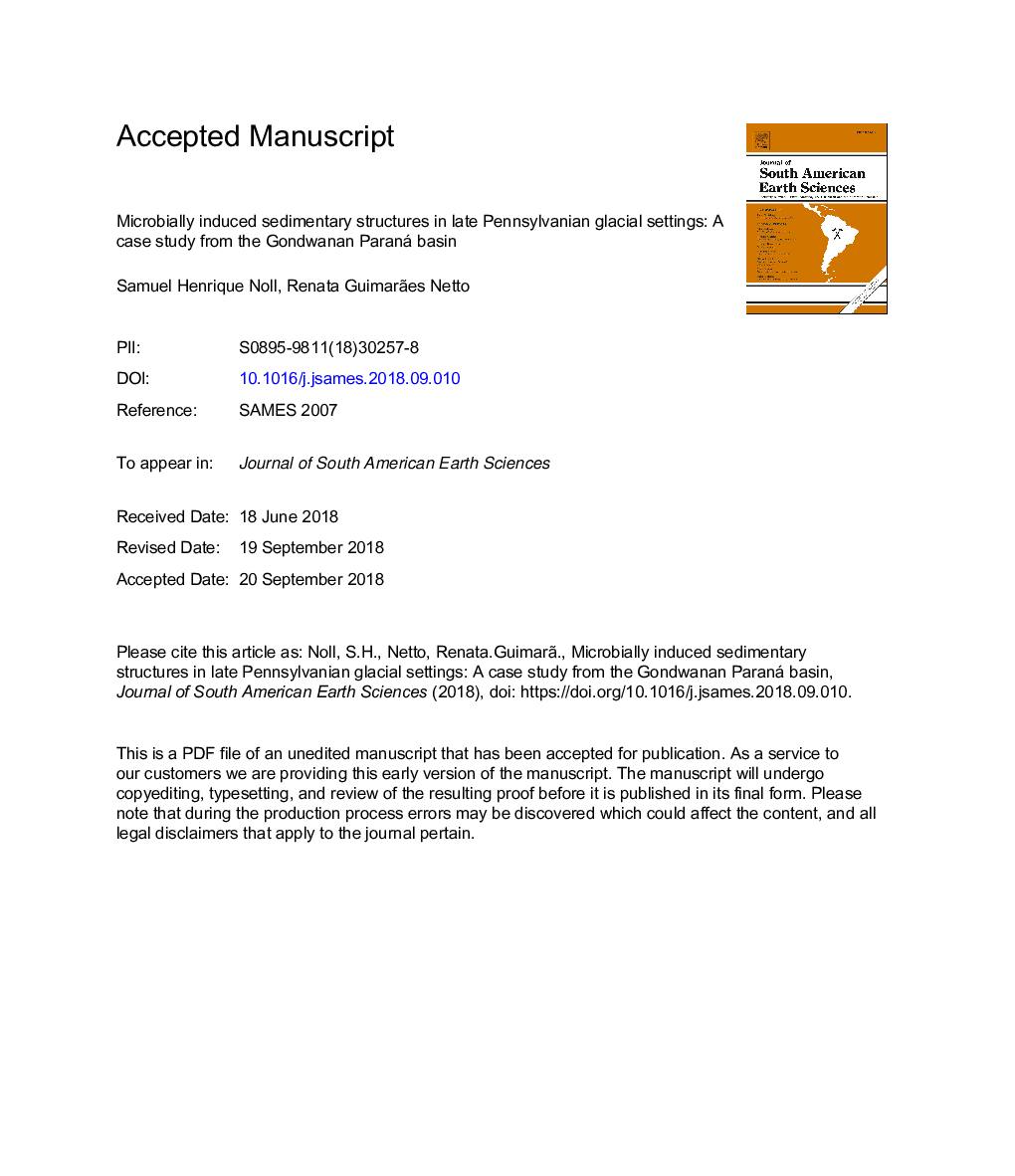| کد مقاله | کد نشریه | سال انتشار | مقاله انگلیسی | نسخه تمام متن |
|---|---|---|---|---|
| 11033118 | 1635123 | 2018 | 59 صفحه PDF | دانلود رایگان |
عنوان انگلیسی مقاله ISI
Microbially induced sedimentary structures in late Pennsylvanian glacial settings: A case study from the Gondwanan Paraná Basin
دانلود مقاله + سفارش ترجمه
دانلود مقاله ISI انگلیسی
رایگان برای ایرانیان
موضوعات مرتبط
مهندسی و علوم پایه
علوم زمین و سیارات
علوم زمین و سیاره ای (عمومی)
پیش نمایش صفحه اول مقاله

چکیده انگلیسی
This paper explores microbially induced sedimentary structures (MISS) preserved in Late Paleozoic Ice Age deposits to evaluate the potential microbe-substrate physical interactions in ancient glacial settings. MISS have been recorded worldwide in different modern and ancient settings, mostly in tidal flats. However, their record in ancient glacial settings is still underrepresented. The reported MISS are preserved in the siltstone-claystone glacigenic rhythmites in Trombudo Central region of the Rio do Sul Formation (Paraná Basin, Pennsylvanian, southern Brazil). The recorded structures in these deposits are composed of wrinkle structures, dome structures, mat fragments, mat microfabrics, sinoidal structures, laminated leveling structures, oriented grains and mat-layer bound small grains, kinneyia structure, discoidal microbial colony, elongated filaments, and drab-haloed filaments. They represent the development of endobenthic and epibenthic microbial mats, as well as microbial earths. Endobenthic mat structures predominate in the siltstone beds, suggesting less time for development of microbial mat during deglaciation events and meltwater input. Epibenthic mat structures preserved in the claystone layers indicate episodic quiescence periods that allowed the mat achieve maturity and that cyanobacteria and sulfate-reducing bacteria composed a significant part of the microbial community. The set of MISS observed in the studied rhythmites have been commonly reported in tidal settings, and the presence of microbial earths structures indicate periods of drainage of the water bodies, at least partially. Thus, the microbial communities played an important role in ancient glacial settings during climatic amelioration periods, opening the colonization window for macroorganisms in outwash plains and marginal marine settings. This paper provides a characterization of different sorts of preserved MISS, and evaluate the physical interactions between microbial mats and the substrate, in the ancient glacigenic deposits from the Itararé Group.
ناشر
Database: Elsevier - ScienceDirect (ساینس دایرکت)
Journal: Journal of South American Earth Sciences - Volume 88, December 2018, Pages 385-398
Journal: Journal of South American Earth Sciences - Volume 88, December 2018, Pages 385-398
نویسندگان
Samuel Henrique Noll, Renata Guimarães Netto,